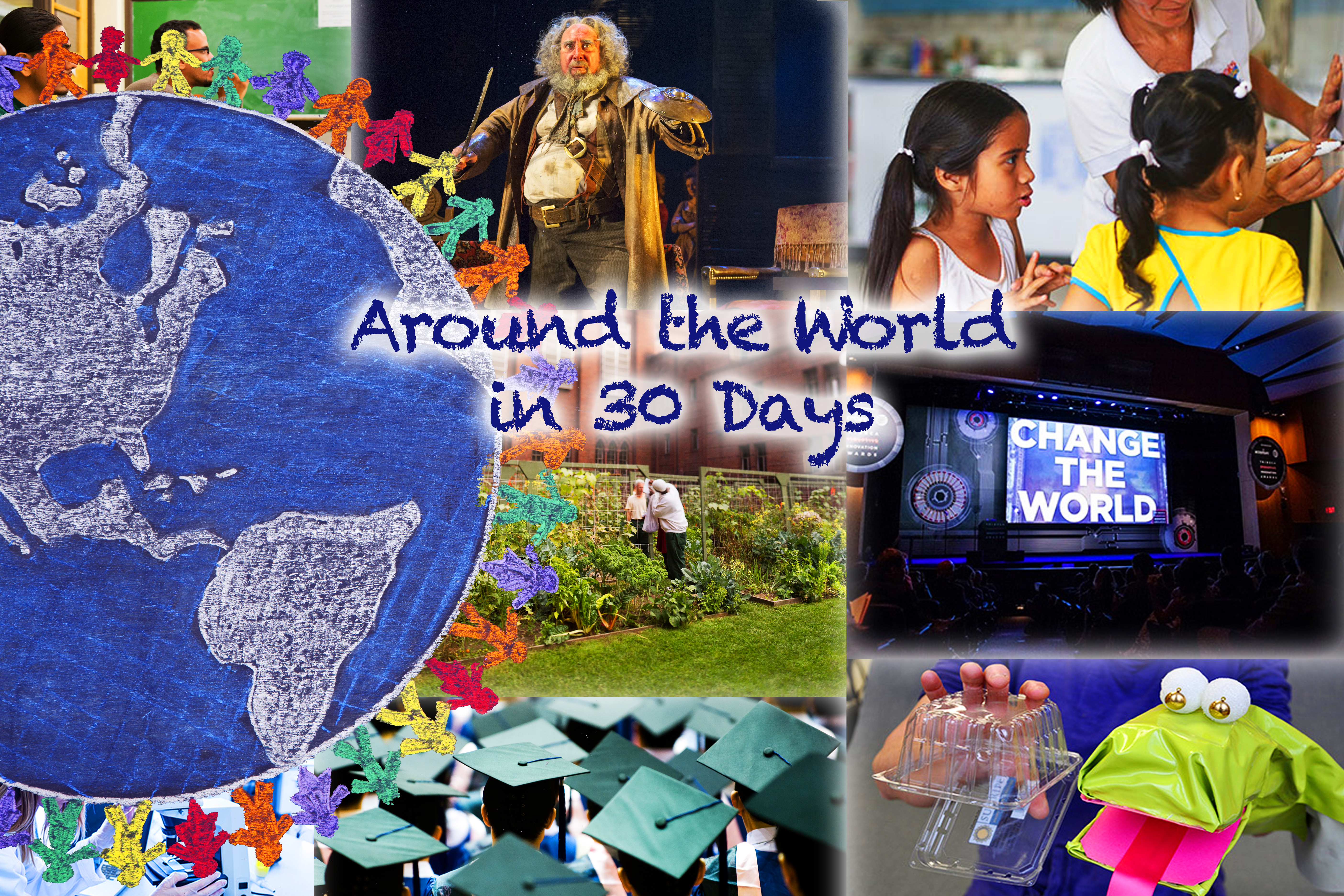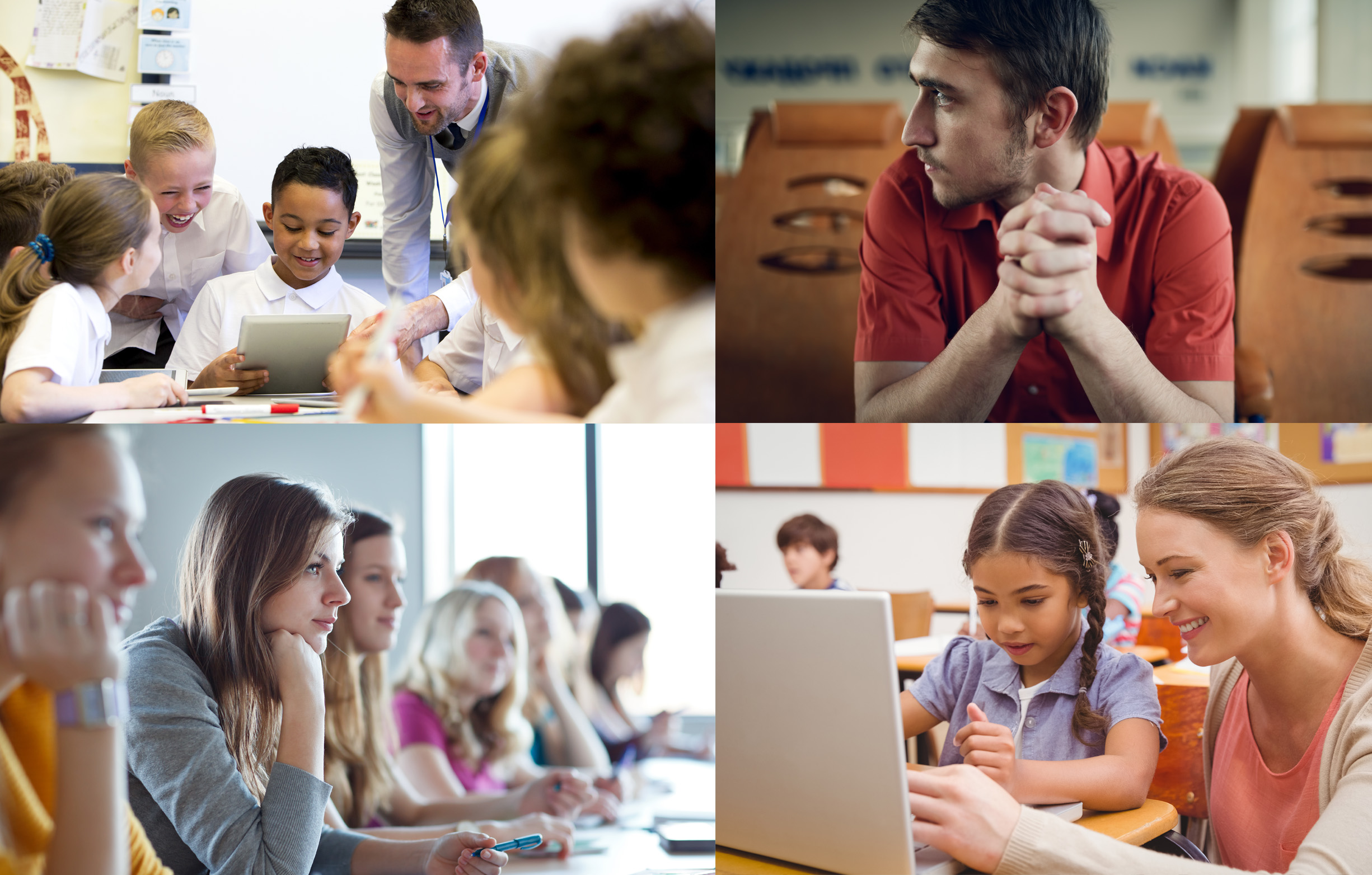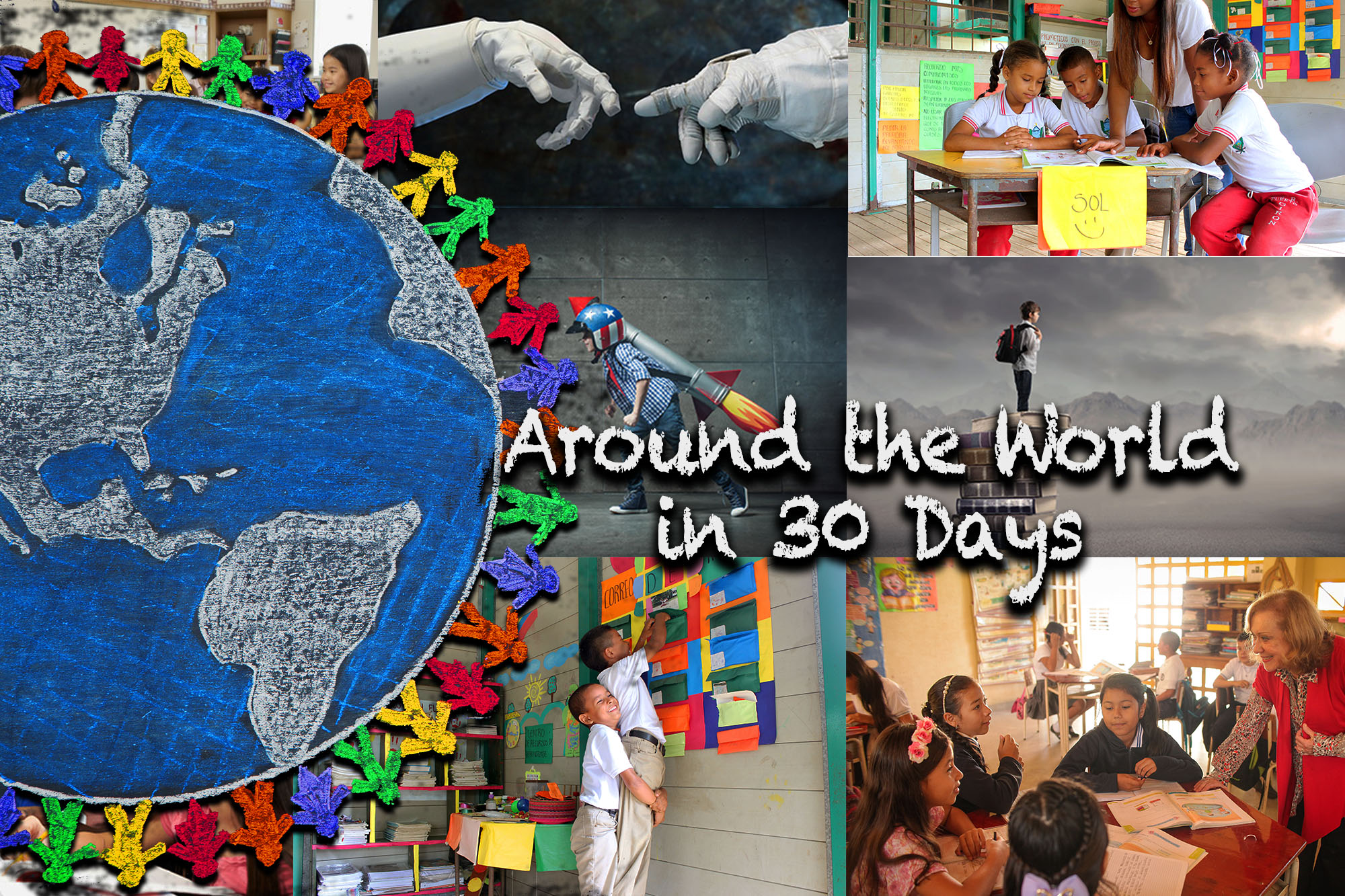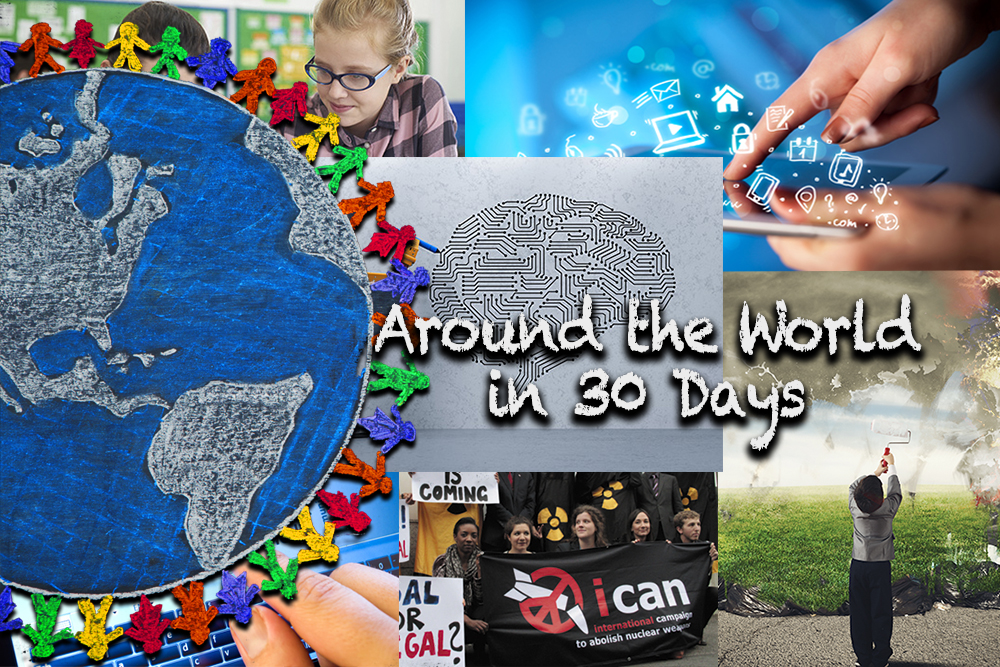Teachers around the world are currently faced with the task of preparing students for a world transformed by climate change. “What the World Thinks about Climate Change in 7 Charts” is a good place to get some key facts about the global issues.
In October of last year, former UN Assistant Secretary-General for Policy Coordination and Inter-Agency Affairs Thomas Gass noted, “Educators have an essential role in making sure the SDGs become a real social contract with the people.” He encouraged educators to join movements, co-create resources and incorporate climate change education “as part of any teaching subject or class.”
More than 1 billion people from 192 countries are expected to take part in Earth Day this year, making it the largest civic-focused day of action in the world. How are teachers around the world tackling SDG Goal 13 to combat climate change? We asked our Top Global Teachers to share their classroom tips for tackling climate change.
“We need new school structures to develop values,” writes Richard Wells (@EduWells). “This can’t be done unless the timetable for the school day shows direct recognition of this value, and ensures teachers have ecological sustainability within the foundation of nearly all activity and learning.” Read More.
“If I had one wish for the classrooms of the world, it is that we would all leave the four walls and enter Classroom Earth,” writes Vicki Davis (@coolcatteacher). “In Classroom Earth we will study nature in nature. We will take measurements that matter as citizen scientists. We will study and record history. As a result, we can train young leaders who appreciate the awesome stewardship they will inherit.” Read More.
“Get Connected!” writes Nadia Lopez (@TheLopezEffect), who is a co-author of the new book Teaching in the Fourth Industrial Revolution. The book showcases a not-to-be-missed platform for all of us serious about Climate Change, created by our Top Teacher blogger (and Nadia’s co-author), Koen Timmers. Climate Action enables schools to participate in project based activities that raise awareness and cultivate advocacy for climate change. Read More.
Miriam Mason Sesay (@EducAidSL) based in Sierra Leone notes that “the increasingly ferocious storms” in her community “are part of a changing pattern” that “looks like climate change and certainly leave the poor particularly vulnerable.” She also credits Koen Timmers’ project for recently engaging her students in renewed efforts on local tree planting projects. Read More.
Warren Sparrow (@wsparrowsa) has created 17 videos about the SDG’s. Additionally, his students were tasked to create videos on the SDG’s of their own choice. Surprisingly the largest number of videos created were focused on climate change. “Is this a sign of the times….?” he asks. Read More.
In 2017, Jim Tuscano (@jimtuscano) launched a project to help 5th and 6th grade students understand the UN’s Sustainable Development Goals. The project has grown substantially to become an “inter-club collaboration” that brings together “moderators and students from grade school clubs, such as the Young Scientists, Social Scientists, Tech Explorers, and SWAT (Students Working with Advanced Tech).” Read More.
“Taking care of the planet is need of the hour,” writes Rashmi Kathuria (@rashkath), who shares tips to tackle climate change such as setting up a school club with activities related to habitat protection, celebrating “Earth Week,” promoting “Earth Hour” (the time to turn off that undesirable power), and an “Anti-Cracker Campaign” (to create awareness for the environmental risks of burning crackers). Read More.
“In Asia,” writes Craig Kemp (@mrkempnz), plastic pollution is in my face everywhere I look. Luckily, just in time for Earth Day, Craig’s done his own global research and presents his top 5 tips for teaching Climate Change in your classroom, such as “know the facts,” link them to “real learning” and “don’t just talk the talk, walk the walk.” Read More.
“How do we make sure we do not deplete our resources before it is too late?” ponders Elisa Guerra Cruz (@ElisaGuerraCruz). Her strategies for climate action include ways to “instill inspiration” vs “fear,” make “climate change part of your curriculum” and “take part in international projects.” Read More.
Guest blogger Marjo Rantanen, Principal of the Kartanonranta school, is referred by Maarit Rossi (@pathstomath) in Finland. Marjo’s thoughts for getting serious about climate change include “The Importance of Social Studies and Math” (e.g. knowing how your planet works is essential to knowing how to stop pollution) and “What does your Classroom Look Like?” (e.g. does your classroom have all the correct recycling bins and are they being used?). Read More.
Shaelynn Farnsworth (@shfarnsworth) is challenging all educators to think differently this Earth Day. Don’t plan activities for students. Instead, “support action designed by students.” The world needs youth “who have the skills and resources to objectively look at an issue, evaluate and analyze multiple viewpoints, and articulate their own opinion,” writes Shaelynn. Read More.
“As a school, we’ve embraced the UN Sustainable Development goals,” writes our guest blogger (referred by Adam Steiner) Carla Shanahan (@ShanahanCarla). “I have incorporated the impact of climate change into the Geologic Time Scale and exploring past mass extinctions in coordination with the 6th grade Massachusetts Science standards.” Read More.
The Top Global Teacher Bloggers is a monthly series where educators across the globe offer experienced yet unique takes on today’s most important topics. CMRubinWorld utilizes the platform to propagate the voices of the most indispensable people of our learning institutions – teachers.
Top Row L to R: Armand Doucet, Craig Kemp, Richard Wells, Elisa Guerra Cruz, Jim Tuscano, Carl Hooker
Middle Row L to R: Jelmer Evers, Maarit Rossi, Koen Timmers, C.M. Rubin, Michael Soskil, Miriam Mason-Sesay
Bottom Row L to R: Nadia Lopez, Rashmi Kathuria, Shaelynn Fransworth, Adam Steiner, Vicki Davis, Warren Sparrow
Join me and globally renowned thought leaders including Sir Michael Barber (UK), Dr. Michael Block (U.S.), Dr. Leon Botstein (U.S.), Professor Clay Christensen (U.S.), Dr. Linda Darling-Hammond (U.S.), Dr. MadhavChavan (India), Charles Fadel (U.S.), Professor Michael Fullan (Canada), Professor Howard Gardner (U.S.), Professor Andy Hargreaves (U.S.), Professor Yvonne Hellman (The Netherlands), Professor Kristin Helstad (Norway), Jean Hendrickson (U.S.), Professor Rose Hipkins (New Zealand), Professor Cornelia Hoogland (Canada), Honourable Jeff Johnson (Canada), Mme. Chantal Kaufmann (Belgium), Dr. EijaKauppinen (Finland), State Secretary TapioKosunen (Finland), Professor Dominique Lafontaine (Belgium), Professor Hugh Lauder (UK), Lord Ken Macdonald (UK), Professor Geoff Masters (Australia), Professor Barry McGaw (Australia), Shiv Nadar (India), Professor R. Natarajan (India), Dr. Pak Tee Ng (Singapore), Dr. Denise Pope (US), Sridhar Rajagopalan (India), Dr. Diane Ravitch (U.S.), Richard Wilson Riley (U.S.), Sir Ken Robinson (UK), Professor Pasi Sahlberg (Finland), Professor Manabu Sato (Japan), Andreas Schleicher (PISA, OECD), Dr. Anthony Seldon (UK), Dr. David Shaffer (U.S.), Dr. Kirsten Sivesind (Norway), Chancellor Stephen Spahn (U.S.), Yves Theze (LyceeFrancais U.S.), Professor Charles Ungerleider (Canada), Professor Tony Wagner (U.S.), Sir David Watson (UK), Professor Dylan Wiliam (UK), Dr. Mark Wormald (UK), Professor Theo Wubbels (The Netherlands), Professor Michael Young (UK), and Professor Minxuan Zhang (China) as they explore the big picture education questions that all nations face today.
The Global Search for Education Community Page
C. M. Rubin is the author of two widely read online series for which she received a 2011 Upton Sinclair award, “The Global Search for Education” and “How Will We Read?” She is also the author of three bestselling books, including The Real Alice in Wonderland, is the publisher of CMRubinWorld and is a Disruptor Foundation Fellow.
Follow C. M. Rubin on Twitter: www.twitter.com/@cmrubinworld







Recent Comments